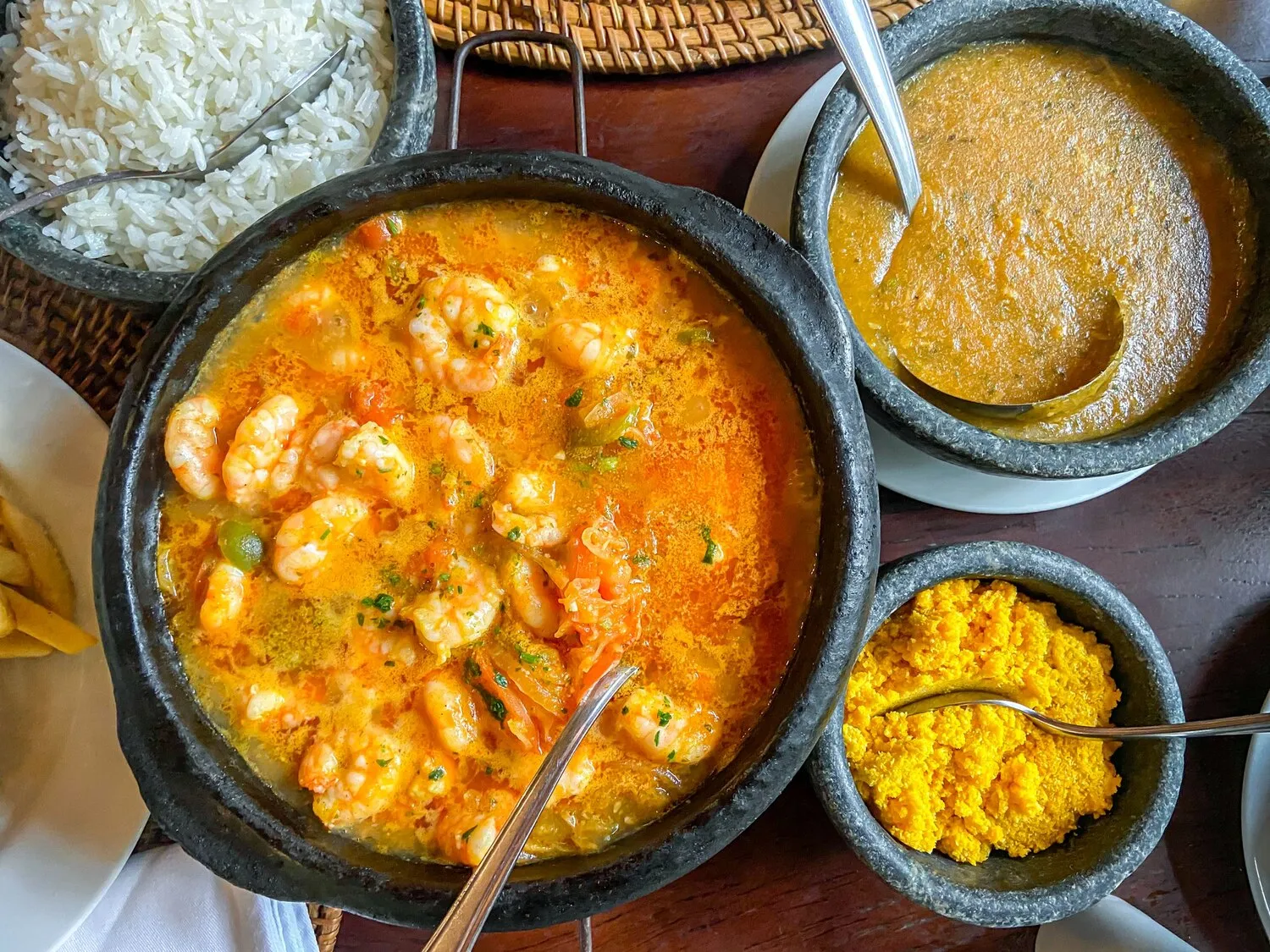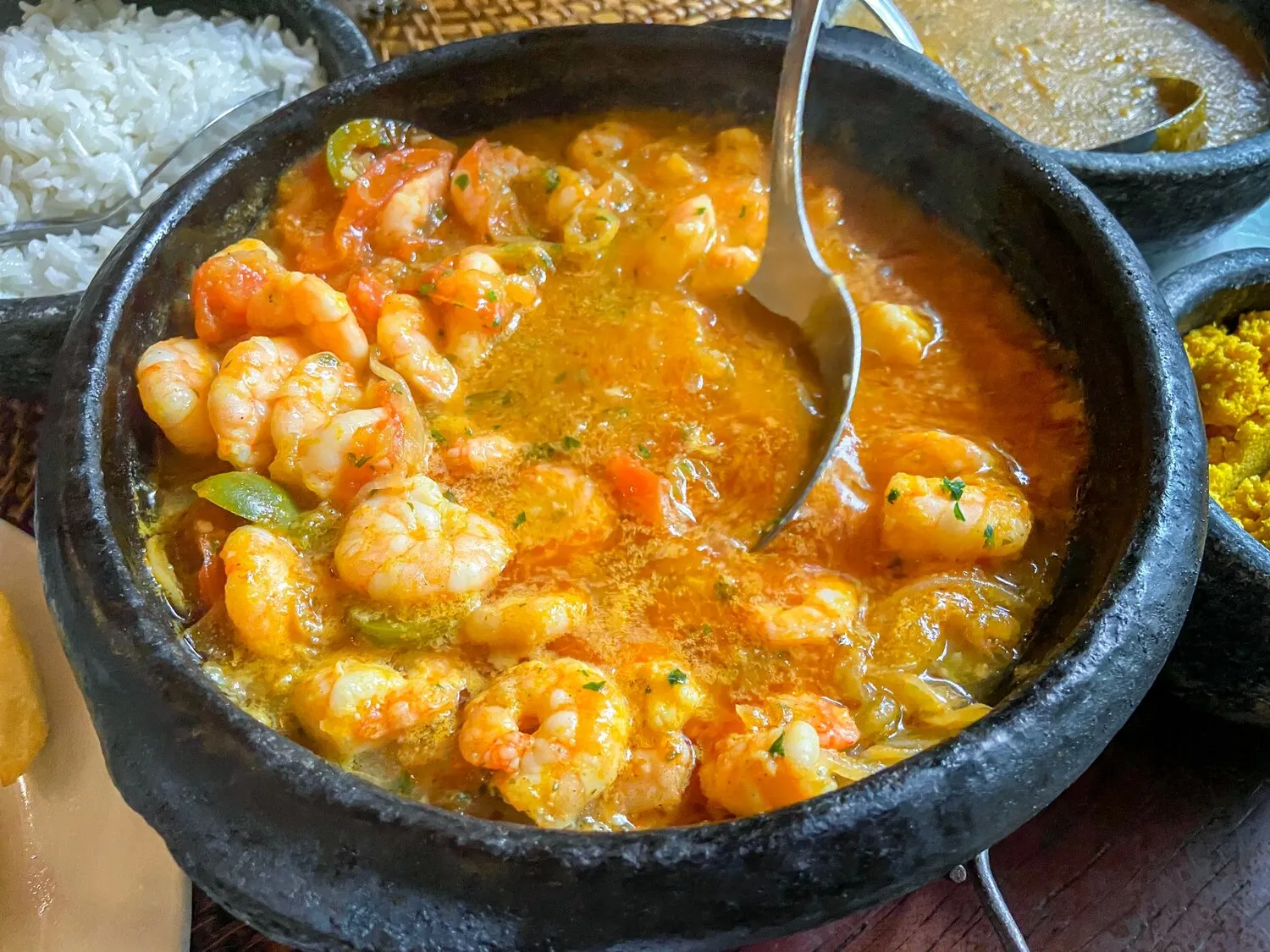
Moqueca Capixaba
A traditional Brazilian seafood stew, slow-cooked in a clay pot with fish, tomatoes, onions, coriander, and annatto oil.
Nutrition Facts
* The % Daily Value (DV) tells you how much a nutrient in a serving of food contributes to a daily diet. 2,000 calories a day is used for general nutrition advice.
Moqueca Capixaba reflects Indigenous Brazilian culinary traditions, blended with influences from Portuguese colonization and African contributions to Brazilian cuisine. The use of clay pots and ingredients native to the region speaks to its pre-colonial roots, while the Portuguese introduced techniques and ingredients like olive oil (sometimes substituted by annatto oil here for a specific flavor profile). African influences are subtle but present in the overall culinary landscape of Brazil and contributed to the development of regional variations of Moqueca.
Moqueca Capixaba is deeply ingrained in the culture of Espírito Santo, representing a strong connection to the sea and local ingredients. It's more than just a dish; it's a symbol of community and tradition, often shared during family gatherings and celebrations.
Family Tradition
Preparing and sharing Moqueca Capixaba is a cherished family tradition, passed down through generations. Each family often has their own unique recipe, tweaking the ingredients and techniques to create their signature version.
Celebratory Dish
Moqueca is commonly served during special occasions, such as birthdays, holidays, and religious festivals. Its communal nature makes it ideal for sharing amongst loved ones.
Regional Pride
Moqueca Capixaba is a source of regional pride for the people of Espírito Santo. It represents their unique culinary heritage and connection to the sea.
Clay Pot Significance
The clay pot ('panela de barro') is an integral part of the experience. These pots, often handmade by local artisans, impart a unique flavor to the dish and are considered essential for authentic Moqueca Capixaba.
Moqueca Capixaba offers a delicate balance of seafood flavors, bright acidity, and subtle sweetness, all harmonized by aromatic herbs and the earthy notes of annatto oil.
The fresh fish and shrimp provide a delicate seafood base. Tomatoes and onions contribute sweetness and acidity, while garlic adds a pungent aroma. Cilantro provides a fresh, herbaceous counterpoint. The annatto oil, or *colorau*, imparts a subtle earthy flavor and vibrant red hue, and is the signature flavor that differentiates the dish from other stews. It should be noted that lime is NOT traditionally used in this stew; acidity comes from the tomatoes. The stew is designed to meld flavors together harmoniously, with each element playing a supporting role rather than overpowering the others.
Fresh Ingredients are Key
Use the freshest seafood available. The quality of the fish and shrimp will significantly impact the final flavor of the dish. Look for firm, shiny fish and plump, odorless shrimp.
Gentle Cooking is Essential
Cook the Moqueca over low heat to prevent the seafood from becoming tough and overcooked. The slow simmering process allows the flavors to meld together beautifully.
Layering Flavors
Layer the ingredients carefully in the clay pot, starting with the onions and tomatoes, then adding the fish and shrimp. This allows the flavors to build upon each other gradually.
Don't Overcrowd the Pot
Avoid overcrowding the pot, which can lower the temperature and prevent the seafood from cooking evenly. Cook in batches if necessary.
Serve Immediately
Serve the Moqueca Capixaba hot, directly from the clay pot. Accompany it with white rice, pirão (a manioc flour porridge), and moqueca sauce to add additional flavor.
Subtleties with Annatto Oil
Be mindful of the amount of annatto oil used; too much can overpower the other flavors. It should enhance, not dominate, the dish.
Explore additional Seafood Stew dishes and restaurants
Explore Seafood StewDiscover top dining spots and culinary experiences in Búzios.
Explore BúziosLearn more about the food culture, restaurant scene, and culinary heritage of Brazil.
Explore Brazil
